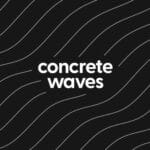Originally published in Concrete Wave Magazine Vol 10 No 1 (Summer 2011)
How long have you been making skateboard products?
I lived to surf and skateboard when we started Comet. I was also pretty naive to what the skate industry was really like and did not really care. I thought that all the skateboard companies out there made their own boards. I thought if you were going to have a company you had to do it yourself and make it yourself with your friends… So we did. I started making skateboards in 1996 — 36″ flat wooden planks of purple-heart wood with wenge wood wedge tails. They looked like exotic Sims Pure Juices. I was mainly giving them away to girls I liked.
When we started Comet, we adapted this design to create beautiful vertically laminated boards with multicolored woods. Purple Skunk was our first customer and inspired us to make a business out of what we were doing because there were barely any longboards in existence. We were skating Mt. Tam full moon sessions, Oakland pools and random hills throughout the Bay Area with good friends. Comet made its first press in 1999. It took months to weld it, wire it and plumb it. It was a group effort.
We have many people to thank for helping make it happen: Jonathan Reese, co founder of Comet; Chris Sullivan; Farron Ezakovich; Matt Buttler, boatyard owner and builder; parents; the Kriegel Clan; and the list goes on…
The first board we pressed was the PROflex 40. It was sweet right out of the mold. It was all about pool decks and hill bombers. We were more of a gang than a skateboard company at the time.
Then it just blossomed.

What gives you the most satisfaction about making skateboard products?
Making skateboards is the culmination of many loves for me.
My knowledge of composites, bending wood and accurate shaping stems from boat building, surfing and many hours of shop talk with Scott Miller, my good friend and true water wizard. Making skateboards allowed me to replicate curves and lines from the sea and bring flow to the street. There will never be enough skateboards to shred the endless skateparks and roads we humans relentlessly lay.
Skateboarding keeps me sane in a world where man is constantly trying to tame nature. Skateboards bring wild unconscious and primal joy to otherwise stark, brutal and utilitarian construction. When I started making skateboards, I was contemplating grad school for Natural Resource Management.
I discovered I could apply my passion for making things to sensible management of our limited resources on this planet and help make the world more livable for future generations by inspiring young people to think.
It’s a lifetime pursuit.
We have been at it for 13 years and [are] just starting to hit our stride in a way that is scalable. That all said, there is nothing like seeing the smile and stoke vibrating off of a skateboarder and knowing that in a small way you are helping make it happen.
What do you feel about the future of North American skateboard manufacturing?
Everything is cyclical. The best skateboards being made right now are made in North America by skateboarder-owned companies. Ideas and innovations immediately make it into new board models.
That is something you can’t get from an outsourced and mass-production mentality. At Comet, our goal is to make things that cannot be copied and mass-produced overseas. We make skateboards to meet the needs of modern skateboarders immediately with the quickest R&D team in the world.
Skateboards come from necessity. They are the merger, in a utilitarian sense, of filling the void of endless pavement and supplanting boredom with passion and the raw, romantic notion of just f***ing shredding.
Skateboards will always represent a culture that embodies what I feel is the true culture of the USA: freedom, to be who we want to be, live our life the way we want to, and ride our machines…dig?
The idea of skateboard manufacture hitting some efficiency of scale overseas so skateboards can be boxed, tagged, processed, imported and sold is anathema to skate culture.
That said, skateboards that come from all the “reviled other places” are not necessarily bad. People from all over have a right to make skateboards wherever it makes sense for them, as long as other people are not being subjected to terrible working conditions and environmental costs are not externalized.
North American manufacturing to Comet means taking full responsibility for every material we touch and working toward a Cradle to Cradle ethos, (reducing inputs, upcycling what most would regard as waste and treating people right). That is a very hard thing to manage when you outsource production. Every dollar skateboarders spend perpetuates one paradigm or another.
You have to ask yourself, what side of progress are you on?
I just spoke to another manufacturer of skateboard products who sent an auditor to the plant that makes his company’s products. The report was appalling, and his company is moving production back to North America as fast as possible.
